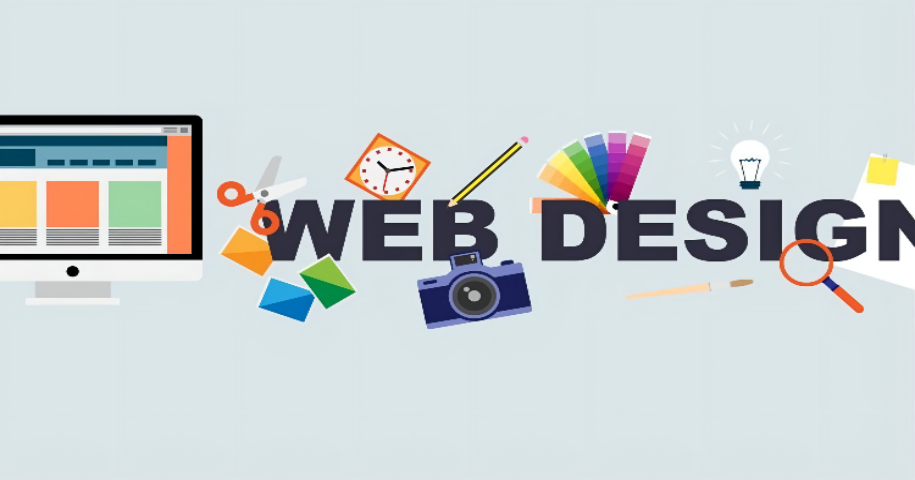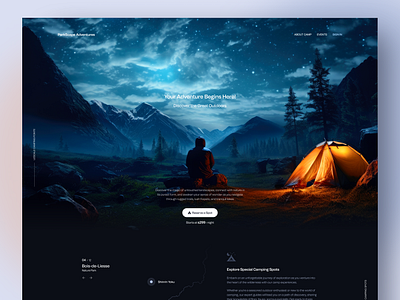Key Elements to Consider When Crafting an Effective Web Design Strategy
Key Elements to Consider When Crafting an Effective Web Design Strategy
Blog Article
How Effective Website Design Can Boost User Experience and Conversions
In the increasingly competitive digital landscape, effective web style plays a crucial function in improving individual experience and driving conversions. By concentrating on user-centric concepts, such as clear content pecking orders and instinctive navigation, businesses can produce appealing systems that not only attract site visitors yet also assist in seamless communications. As we explore the key aspects that add to effective internet layout, it comes to be noticeable that the influence on individual contentment and conversion rates is extensive. Comprehending these dynamics may reveal techniques that can change just how users involve with your site.
Significance of User-Centric Style
In the world of web style, focusing on user-centric layout is paramount for creating efficient digital experiences. This technique concentrates on recognizing the requirements, choices, and habits of customers, guaranteeing that electronic user interfaces are user-friendly and accessible (Web design). By integrating customer comments into the style procedure, web developers can craft experiences that resonate with their target market, ultimately bring about boosted involvement and contentment
User-centric design stresses functionality, which is crucial for lessening and retaining customers bounce rates. When individuals can browse a website effortlessly, they are extra likely to discover its material and transform into consumers.

Secret Components of Reliable Format
Effective layout acts as the backbone of user-centric web style, converting customer needs into visual structures that help with interaction. A well-organized format focuses on web content through a clear pecking order, assisting users' eyes to important info first. This pecking order is commonly developed making use of dimension, color, and spacing, guaranteeing that important elements stand out.
Another crucial element is the use of whitespace, which avoids congestion and improves readability. Web design. Whitespace enables aspects to breathe, making the total style show up cleaner and easier to navigate. In addition, consistency in layout aspects, such as colors and font styles, promotes knowledge and depend on, allowing customers to navigate the site with better simplicity
Grid systems can also be indispensable, providing a framework that straightens content practically and visually. This positioning enhances the customer experience by developing a structured aesthetic flow. In addition, adaptability in format-- like receptive layout-- makes certain that websites execute well across different tools, dealing with diverse individual choices.
Inevitably, an effective design not just mesmerizes users however additionally urges them to engage more deeply, eventually fulfilling and driving conversions business goals. By focusing on these crucial elements, designers can produce formats that resonate with users and improve their general experience.
Navigational Finest Practices
Intuitive and clear navigation is crucial for improving individual experience on a web site. A well-structured navigation system enables individuals to locate information promptly, which directly impacts their contentment and probability of conversion - Web design. Carrying out a hierarchical framework is necessary; make use of classifications and subcategories that rationally team relevant content, making it simpler for visitors to explore
Consistency in navigation aspects is additionally crucial. Make certain that switches, food selections, and web links preserve uniformity stylishly, shade, and placement throughout all web pages, offering individuals with an acquainted framework as they navigate. In addition, use descriptive labels for navigating things. Rather than common terms, choose clear labels that precisely show the web content, assisting individuals in making informed choices.

Mobile Responsiveness and Access

Availability, on the other hand, concentrates on making web sites usable for individuals with disabilities. This includes adhering to guidelines such as the Web Content Accessibility Guidelines (WCAG), which deal with concerns like shade comparison, text dimension, and key-board navigation. By carrying out these requirements, web developers can produce comprehensive experiences that satisfy a wider audience, thereby improving user engagement and contentment.
Additionally, mobile responsiveness and access not only boost individual experience yet additionally favorably impact online search engine positions. Online like it search engine focus on mobile-friendly and easily accessible sites, making them more probable to appear in appropriate search outcomes. Spending in these aspects of internet design not just meets user requirements yet additionally adds to total organization success with boosted presence and enhanced conversion prices.
Determining Success Through Analytics
Tracking user communications and actions via analytics is necessary for examining the success of a web site. By leveraging devices such as Google Analytics, services can gather vital information that discloses just how customers engage with their website. Metrics such as bounce rates, average session duration, and conversion prices offer insights into customer behavior and can highlight locations for renovation.
Understanding user demographics and website traffic sources better boosts a site's effectiveness. This information allows internet designers to tailor content and design elements to much better satisfy the requirements of their target market. Furthermore, tracking details user journeys assists identify possible bottlenecks in the conversion channel, allowing companies to enhance their web style as necessary.
Regularly assessing this analytics data is essential for continuous improvement. A/B testing various style components can supply concrete proof of what resonates with users, permitting educated choices based on real-world efficiency. Ultimately, measuring success through analytics not just improves customer experience but likewise drives conversions, making certain that website design initiatives align with service goals. In an electronic landscape where competitors is strong, taking advantage of the power of analytics is essential to keeping a effective and straightforward read review internet site.
Final Thought
In conclusion, reliable internet design plays a critical duty in boosting individual experience and driving conversions. Eventually, gauging success via analytics permits for continuous improvement, ensuring that style approaches remain straightened with user demands, consequently cultivating business development and success.
In the significantly competitive electronic landscape, efficient internet layout plays a critical role in improving user experience and driving conversions. By incorporating individual responses right into the design process, internet designers can craft experiences that reverberate with their target audience, eventually leading to raised interaction and fulfillment.
Eventually, the significance of user-centric layout lies in its capacity to create purposeful interactions that drive conversions and foster long-term partnerships with individuals, making it a vital component of effective internet layout methods.
Ultimately, determining success via analytics not just enhances individual experience however likewise drives conversions, making certain that web style initiatives align with service objectives.In final thought, efficient internet design plays a pivotal duty in boosting customer experience and special info driving conversions.
Report this page